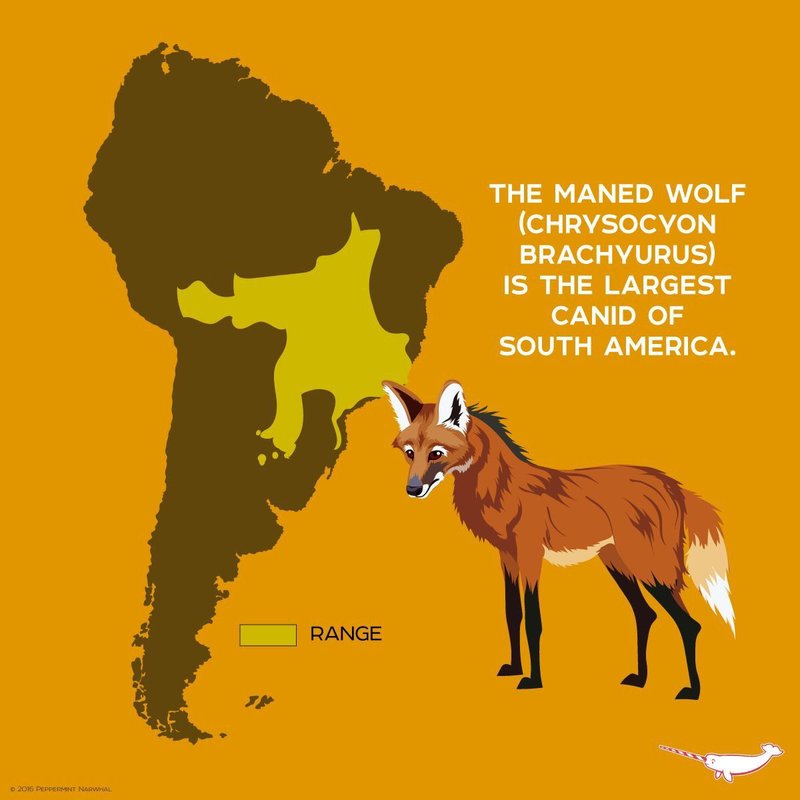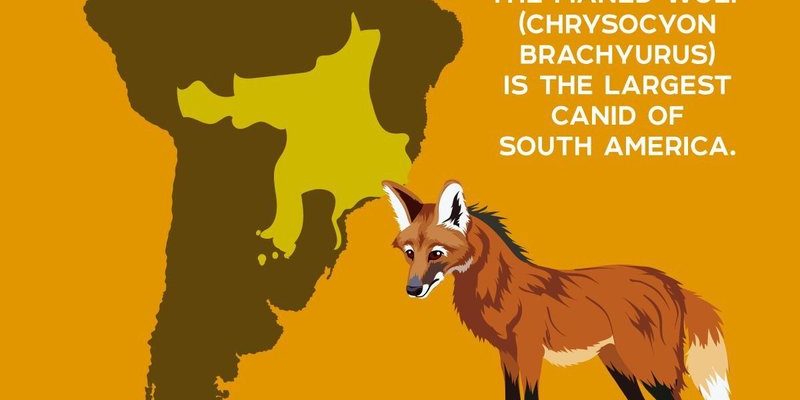
So, where exactly do these unique animals call home? Honestly, maned wolves prefer environments that allow them to thrive, and their habitat choices tell a story of adaptation and survival. In this article, we’ll delve into the habitats and distribution of maned wolves, shedding light on their range across the continent.
Understanding Maned Wolf Habitat
To put it simply, maned wolves are not your typical woodland dwellers. They favor open areas where they can roam freely and hunt. Typically, their habitats include savannas, grasslands, and scrub forests. Imagine broad, sweeping landscapes where the grass ripples in the wind and the sky stretches endlessly above—this is the kind of place where maned wolves thrive.
One of the key reasons these animals choose open habitats is their hunting style. With their long legs, they can see far and move quickly over long distances. This is perfect for spotting their primary food source: small mammals, birds, and even fruit. So, while you might think of a wolf as a stealthy predator lurking in the shadows, maned wolves prefer to be out in the open, showcasing their unique hunting skills.
In addition to grasslands, maned wolves can also be found in more temperate regions. They often adapt to different environments, but they still need plenty of space to roam. That’s why you’ll find them in regions with scattered bushes, tall grasses, and even wetlands. Each of these areas offers something different, from hiding spots to places rich in food sources.
Geographic Distribution of Maned Wolves
Now that we have a grasp on their habitat preferences, let’s talk geography. The maned wolf’s range is primarily in South America, particularly in countries like Brazil, Argentina, Paraguay, and Bolivia. Think of it as their playground, where they can explore and hunt freely.
Interestingly, the largest populations of maned wolves are in Brazil’s Cerrado region, a vast tropical savanna. This area is not only beautiful but also thriving with diverse wildlife. It’s like a giant buffet for maned wolves, where they can feast on rodents, birds, and fruits. However, their distribution isn’t just limited to this region; they wander into surrounding countries, adapting to various landscapes as they go.
Sadly, their range is becoming more fragmented due to human activities. Urban sprawl, agriculture, and habitat destruction are pushing maned wolves into smaller and smaller areas. It’s a bit like being squeezed into a corner—you still want to roam and explore, but there isn’t much room left to do so.
Maned Wolves and Their Environment
The maned wolf’s habitat plays a crucial role in their survival. These animals have evolved to thrive in open spaces, which helps them avoid competition with other predators. In a way, their long legs and unique body structure are perfectly designed for their environment. They can run swiftly across open fields, which is especially handy when chasing down prey.
However, the environment also presents challenges. For instance, maned wolves are particularly vulnerable to habitat loss. As humans expand their territories into these wild spaces, the resources these wolves depend on become scarcer. This can lead to conflicts with farmers, who view them as threats to livestock.
Another interesting factor is their adaptability. Maned wolves can also survive in areas that have been altered by human presence. They may not thrive as well, but they can make do as long as there are patches of natural habitat available. Think of it as finding a way to dance in a smaller space—it’s not easy, but it’s possible!
The Role of Wetlands in Their Habitat
While grasslands and savannas are essential, wetlands also play a significant role in the maned wolf’s ecosystem. These areas provide important resources like water and a variety of food sources. Maned wolves often hunt in wetlands for small mammals and fish, making these environments crucial for their nutrition.
Wetlands also serve as refuge habitats during dry seasons. When food becomes scarce in open grasslands, maned wolves can rely on wetlands to sustain themselves. It’s a delicate balance—these areas must remain protected for the wolves to continue thriving.
However, wetlands face threats from pollution and drainage for agricultural purposes, putting additional pressure on maned wolves. It’s a reminder that every part of their habitat is interconnected, and preserving wetlands is vital for their survival.
Challenges Facing Maned Wolves
Despite their resilience, maned wolves face significant threats. One of the most pressing issues is habitat destruction. As mentioned earlier, urban development and agriculture push these animals further into smaller, confined spaces. When their homes shrink, their chances for survival do too.
Another concern is road accidents. Since maned wolves need to travel long distances in search of food, crossing roads can be deadly. It’s heartbreaking to think that these majestic creatures often meet their fate just trying to find a meal or explore new territory.
Additionally, climate change is creating unpredictability in their environment. Changing weather patterns can affect food availability and alter habitats. It’s a constant challenge for maned wolves, as they must adapt to survive amid these changes.
Conservation Efforts and the Future
The future of maned wolves largely depends on conservation efforts. Various organizations are working to protect their habitats and raise awareness about their plight. Initiatives include creating wildlife corridors to help connect fragmented habitats, allowing these wolves to roam and hunt more freely.
Public education is also crucial. The more people understand the value of maned wolves and their habitats, the more likely they are to support conservation measures. It’s about fostering a love for these unique animals and a commitment to preserving their homes.
Ultimately, the success of these efforts hinges on the collective action of communities, governments, and conservationists. If we want to ensure that maned wolves continue to dance gracefully across the grasslands of South America, we must act now to protect their future.
In summary, maned wolves are more than just another exotic animal; they’re a vital part of the South American ecosystem. Their preference for expansive grasslands and wetlands illustrates their unique adaptations and lifestyle choices. While they face numerous challenges, conservation efforts provide a glimmer of hope. As we learn more about these fascinating creatures, it becomes clear that protecting their habitat is crucial for their survival.
So, the next time you hear about maned wolves, remember their incredible journey through the grasslands of South America. Every effort we make to preserve their habitat is a step toward ensuring that these beautiful, long-legged animals continue to thrive for generations to come.

